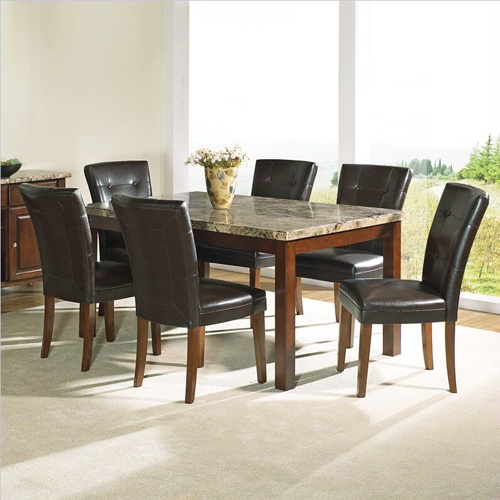
Chairs
Rs.
Rs.
- MaterialVelvet
- MaterialMango wood
- FinishWalnut finish
- ColorSalmon pink
- Dimensions(Inch)22 L x 26 W x 30 H
- StyleModern
- Dimensions (Cm)55.9 L x 66 W x 76.2 H
-
Purpose:
Determine the intended use of the chairs. Different settings may require chairs with specific features. For example, dining chairs, office chairs, lounge chairs, and outdoor chairs serve different purposes. -
Comfort:
Comfort is crucial, especially for chairs used for extended periods. Consider factors such as seat cushioning, back support, and ergonomics. Test the chair to ensure it provides a comfortable sitting experience. -
Style and Aesthetics:
Choose chairs that match the overall style and aesthetic of the space. Whether you prefer modern, traditional, or eclectic designs, the chairs should complement the existing decor. -
Material:
Chairs come in a variety of materials, including wood, metal, plastic, fabric, leather, and more. Consider the durability, maintenance, and visual appeal of the material. Some materials are better suited for specific environments, such as outdoor or high-traffic areas. -
Size and Scale:
Ensure that the size and scale of the chairs are appropriate for the space. Consider the height of the chair in relation to tables or desks. Chairs that are too large or too small for the space can be visually unappealing. -
Durability:
Choose chairs that are durable and can withstand regular use. Consider the construction, materials, and weight capacity. Commercial-grade chairs may be necessary for high-traffic areas. -
Stackability and Storage:
If space is a consideration, look for chairs that are stackable for easy storage. This feature is especially useful in settings where chairs need to be stored when not in use. -
Maintenance:
Consider the ease of cleaning and maintenance. Chairs in dining areas, for example, may be prone to spills, so choosing materials that are easy to clean can be practical. -
Versatility:
Choose chairs that can be used for various purposes if needed. Versatile chairs can adapt to different settings, making them more cost-effective. -
Legs and Base:
Consider the type of legs or base the chair has. Some chairs have legs with casters, while others have a stable base. The choice may depend on the type of flooring and the need for mobility. -
Budget:
Set a budget for your chair purchase. Prices can vary based on the design, materials, and brand. Balance your budget with the need for quality and durability. -
Brand Reputation:
Choose chairs from reputable manufacturers or brands known for producing quality furniture. Reading reviews and seeking recommendations can help you make an informed decision. -
Regulatory Compliance:
Ensure that chairs meet safety and quality standards, especially in commercial settings. Check for certifications and compliance with relevant regulations. -
Delivery and Assembly:
Consider the logistics of delivery and assembly. Check whether the chairs can be easily delivered to your location and whether any assembly is required.
By carefully considering these factors, you can select chairs that not only serve their functional purpose but also contribute to the overall design and comfort of the space in which they are placed.












